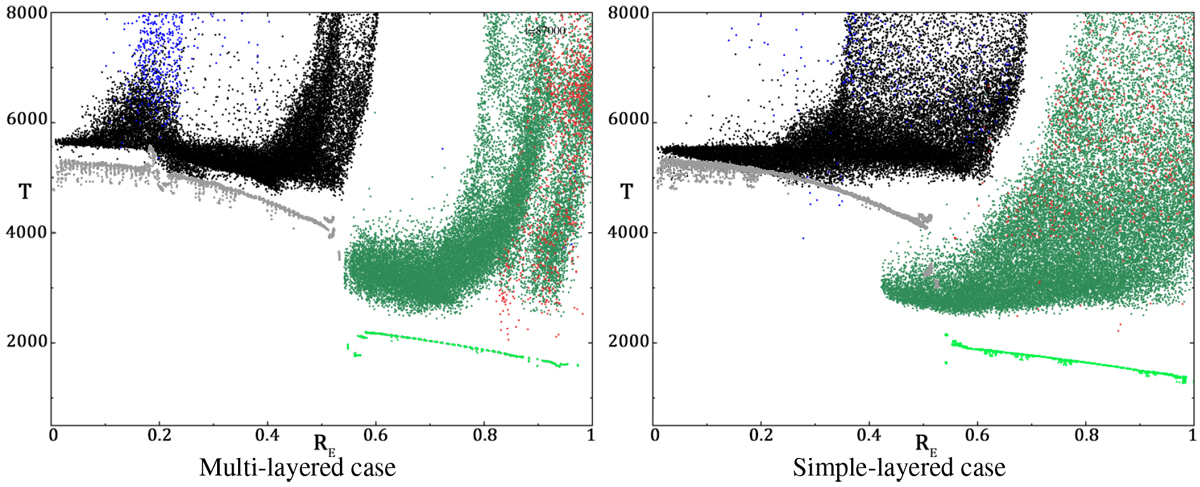Fig. 10

Temperature profile of the multi-layered proto-Earth (left) and simple-layered proto-Earth (right) before and 24 h after impact. The gray (core) and light green (mantle) show the pre-impact proto-earth conditions. The black (iron) and dark green (silicate) show material from the target planet, while blue (iron) and red (silicate) show material from the impactor. This can be directly compared to the figure from Canup (2008b) which looks at the same ranges. Comparing to their results we can see that both of our pre-impact proto-Earths have a more continuous temperature profile (except at core mantle boundary). The silicate mantle is around the same temperature while our iron core is about 1000–2000K hotter. The most significant difference can be seen in the multi-layered case, where in the post-impact results there is significant mixing between the outer core material and impactor core, which is not present in the simple-layered case or in the work of Canup (2008b). This is due to the outer core being in a hotter state (molten) as the impactor core slams into it, which causes an increase in the temperature of the outer core material as the impactor material mixes with it. The temperature of the shocked impactor material reaches around 34 000 K at its peak for the multi-layered case and about 42 000K in the simple-layered case.
Current usage metrics show cumulative count of Article Views (full-text article views including HTML views, PDF and ePub downloads, according to the available data) and Abstracts Views on Vision4Press platform.
Data correspond to usage on the plateform after 2015. The current usage metrics is available 48-96 hours after online publication and is updated daily on week days.
Initial download of the metrics may take a while.


